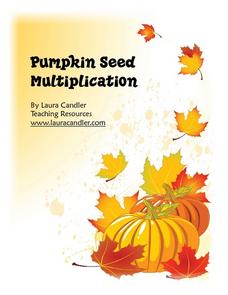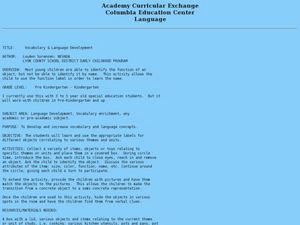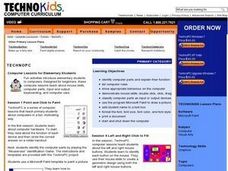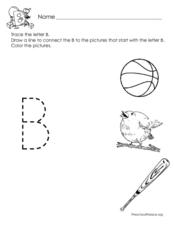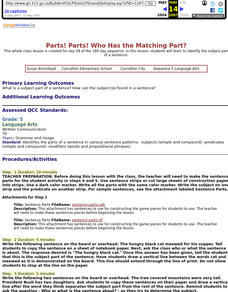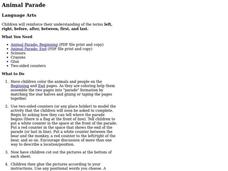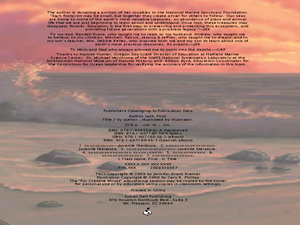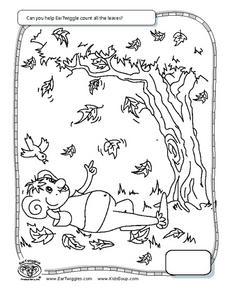Curated OER
Shape Detectives
Students become "shape detectives" as they identify, name, create and describe common shapes within pictures and objects found within the learning environment. Suggestions include incorporating shapes into all learning areas and daily...
Curated OER
Pumpkin Seed Multiplication
Students practice multiplication facts. In this multiplication lesson plan, students participate in a pumpkin seed multiplication game where they match up addition sentences and multiplication facts. Game board and number sentences are...
Curated OER
Come Fly with Me
Students identify rhyming words from the book A Fly Went By by matching words written on index card with same endings, eliciting word when prompted by teacher, and by identifying rhyming words in the text.
Curated OER
Name That Point!
Students compare projectile point attributes, identify and classify points, and match projectile points to a chronology.
Curated OER
Observations and Inferences
Pupils observe how to distinguish observations form inferences. In this examining inferences lesson students list observations relating to the activity and discuss the importance of them.
Curated OER
Vocabulary & Language Development
Students develop their vocabulary skills. In this vocabulary and language activity, students practice naming everyday objects as they take part in 3 classroom activities that require them to note attributes of everyday objects their...
Curated OER
Larva and Adult Antlion Body Parts
Students identify the major body segments of antlions. Through the use of diagram worksheets, students label the various body parts of the antlion. They review the life cycle of antlions from the larva stage to adult. Several activities...
Curated OER
Techno PC: Computer Lessons for Elementary Students
Students explore computer science by participating in mini activities. In this graphic design lesson, identify the different components on a personal computer and define their purpose. Students utilize Microsoft Paint to create a digital...
Curated OER
Using Blood Tests to Identify Babies and Criminals
Students solve a crime by matching a suspect's blood type to physical evidence collected at the crime scene. In this forensic science lesson, students identify the different blood types. They explain how blood tests work.
Curated OER
All About Me Unit
Learners engage in an "All About Me," series of activities in the beginning of the year. All sorts of ideas are in this lesson plan to help students express themselves and get to know their classmates.
Curated OER
Cause and Effect
Third graders investigate cause and effect. For this cause and effect lesson, 3rd graders read a story and determine what are the causes and effects. Students match sentence strips to the make the correct cause and effect sentence....
Curated OER
Discovering Chemical Changes
Fourth graders predict what happens in a teacher demonstration of a chemical change, before watching it. They observe the demonstration and list what the see on the board before determining which represent chemical change. Working at...
Curated OER
Beginning Consonant-B
In this beginning consonant worksheet, students trace the letter B, then draw a line to match it to a picture that begins with the sound. Worksheet has a reference web site for additional activities.
Curated OER
Engineering and the Senses: Smell
Students define the sense of smell. In this smell sense lesson plan, students review their five senses and define the importance of smell. Students practice smelling and identifying items in bags. Students discuss the importance of smell...
Curated OER
Parts! Parts! Who Has the Matching Part?
Fifth graders identify the subject part of a sentence. They receive randomly distributed teacher-made sentence parts. They have either a subject part of a sentence or the remainder of the sentence.
Curated OER
Taster/Non-taster Lab Activity
Learners determine if they are tasters or non-tasters and then replicate the experiment with family and peer group members. They collect data from the experiment to determine which trait is dominant.
Curated OER
Animal Parade
Learners begin the activity by coloring animals on the beginning and end pages. They are to put the other pages in order based on the animals place in the parade.
Curated OER
Autumn's Palette
In this Ranger Rick worksheet, students participate in a nature walk, observe the leaves, and sketch some of the leaf shapes they encounter. Students also respond to a question regarding the range of leaf colors they observe.
Curated OER
Animal Hide and Seek
Students read about animal camouflage. For this animal adaptation lesson, students read short texts about ways in which animals hide or transform to escape their prey. Students explore animal classifications and determine ways to hide in...
Curated OER
Feet Are Neat
Students describe several types of bird feet and explain how each type helps a bird survive in its habitat. Students then match birds to their feet and mold bird feet out of clay.
Curated OER
Introduction to Dr. Seuss
First graders look at slides on the SMART Board of different facts about Dr. Seuss and then create a class bar graph of their favorite Dr. Seuss books. In this Dr. Seuss lesson plan, 1st graders review and list facts that they learned...
Curated OER
Preposition Man
Pupils practice using prepositions by writing on the tracing of a human. In this parts of speech lesson, students create a giant poster using the tracing of a classmate's body and fill in the outline using prepositions in places...
Curated OER
EarTwiggle
In this counting leaves worksheet, students assist EarTwiggle in counting all the leaves found within a piece of art and then place their answer in the box provided at the lower right hand corner.
Curated OER
Memory
Students participate in a Spanish/English matching game. In pairs, they take turns matching new vocabulary to its English counterpart. They are trying to match all vocabulary and receive a star when it is correct. They play the game...



